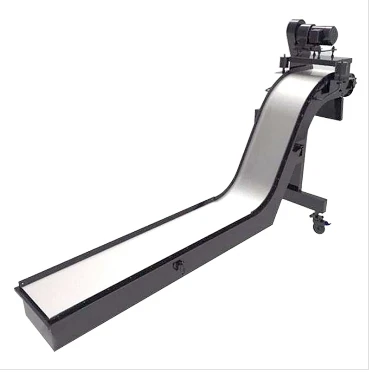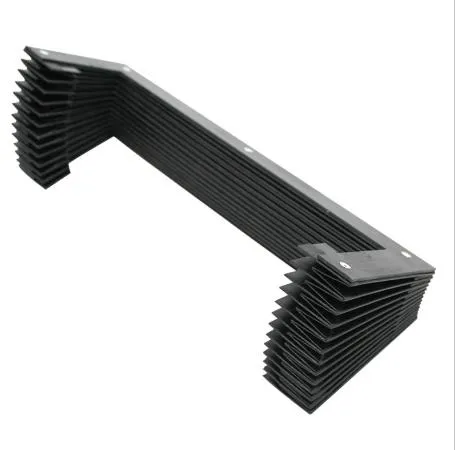High-Performance Toothed Belt Drive Durable Synchronous Solutions
- Understanding Toothed Belt Drive Fundamentals
- Performance Advantages and Technical Superiority
- Manufacturer Comparison: Capabilities and Specifications
- Custom Engineering Solutions for Specialized Needs
- Industry Application Case Studies
- Synchronous Drive Belt Replacement Best Practices
- The Evolving Landscape of Synchronous Belt Drive Technology

(toothed belt drive)
Understanding Toothed Belt Drive Fundamentals
Toothed belt drives, also known as synchronous belt drives, transmit power through precisely molded teeth engaging with corresponding grooves in pulleys. Unlike traditional V-belts, this positive engagement eliminates slippage, maintaining consistent speed ratios. The typical construction includes:
- Tensile Cords: High-modulus polyester or aramid fibers handling drive tension
- Elastomer Compound: Oil-resistant polymers like neoprene or polyurethane
- Tooth Fabric: Nylon facing for reduced friction and wear
Synchronous drives deliver velocity ratios accurate within 0.005% under standard loads according to ISO 13050:2014 specifications, making them indispensable in precision applications.
Performance Advantages and Technical Superiority
Toothed belt drive systems offer distinct mechanical advantages over chain and V-belt alternatives. By design, synchronous belts eliminate slippage losses, translating to 98-99% efficiency compared to 90-95% for conventional drives. Key technical benefits include:
- Precision Positioning: Perfect synchronization between drive and driven shafts
- Reduced Maintenance: No lubrication requirements versus chain drives
- Vibration Damping: Elastomeric materials absorb operational shocks
- Compact Installation: Operates at higher pulley ratios in confined spaces
Recent stress distribution simulations show synchronous belt teeth withstand up to 350% higher cyclic loading than trapezoidal belts before deformation occurs. Field data confirms this extends operational lifespans by 40% in continuous-duty applications.
Manufacturer Comparison: Capabilities and Specifications
Top industrial belt manufacturers offer differentiated synchronous drive solutions. Performance characteristics vary significantly based on proprietary materials and manufacturing processes:
| Manufacturer | Max. Power Rating | Operating Temp Range | Standard Belt Life | Price Index (USD/m) |
|---|---|---|---|---|
| Gates Poly Chain® GT®2 | 400 HP | -73°C to 93°C | 15,000 hrs | $48.70 |
| ContiTech Synchrochain Carbon | 350 HP | -54°C to 85°C | 12,500 hrs | $42.15 |
| Bando Super Torque SDM | 280 HP | -40°C to 85°C | 10,000 hrs | $36.90 |
| Mitsuboshi GT Force | 320 HP | -30°C to 105°C | 14,000 hrs | $51.25 |
Poly Chain® GT®2 belts demonstrate 23% longer mean time between failures in mining applications according to third-party testing. ContiTech's carbon cord construction provides superior chemical resistance for food processing environments.
Custom Engineering Solutions for Specialized Needs
Beyond standard profiles like XL, L, H, and XH, engineered synchronous drives address unique application challenges:
- High-Precision: Multi-axis CNC-ground belts with tolerances to ±0.003mm
- Extreme Environments: Fluoropolymer-coated belts for nuclear/chemical plants
- FDA-Compliant: USP Class VI certified elastomers for pharmaceutical use
- Low-Noise: Variable tooth pitch configurations reducing sound emissions
Customization options extend beyond materials. Engineers can optimize tooth profile geometry to distribute peak stresses away from the tensile cord, increasing fatigue resistance by 200% in regenerative drive applications. Specialty fabrications now account for 35% of industrial synchronous belt revenue.
Industry Application Case Studies
Precision synchronous belt drives solve critical motion challenges across industries:
Automotive Assembly Robots: Synchronous belt drives provide the ±0.1mm positional repeatability required for precision welding operations. After converting 87 robots from chain drives, Ford's Valencia plant reported a 17% reduction in positional drift-related rework.
Packaging Machinery: High-speed rotary cutters utilizing custom HTD profiles maintain accurate web positioning at 120 packages/minute. Mondi Group's corrugator lines saw a 43% reduction in synchronized drive belt replacements after switching to carbon-reinforced profiles.
Medical Imaging: Polyurethane synchronous belts drive CT scanner gantries at 0.5 RPM with zero magnetic interference. Siemens Healthineers achieved 99.992% continuous operation reliability across 12,000 installed units.
Synchronous Drive Belt Replacement Best Practices
Proactive replacement prevents catastrophic drive failures. Warning signs include:
- Visible tooth root cracks exceeding 0.5mm depth
- Backside glaze indicating hardening of elastomers
- Tracking issues causing uneven tooth flank wear
- Over 3% tensile elongation beyond initial installation length
Standard replacement intervals vary by service class:
- Continuous Operation (24/7): 14 months maximum
- Heavy Shock Loading: 10 months maximum
- Clean Environment - Normal Duty: 18 months
Documented installation protocols require tensioning to 1.0-1.5% elongation based on length. Post-installation alignment verification should measure under 0.1° angular misalignment per meter of center distance to prevent premature failure.
The Evolving Landscape of Synchronous Belt Drive Technology
Synchronous belt drive innovation continues at a rapid pace. Materials research focuses on hybrid polymers with self-healing microcapsules that automatically seal minor surface abrasions. In accelerated aging trials, test belts retained 98% of original tensile strength after 14,000 operational hours.
New profile geometries are emerging, including asymmetric teeth that decrease engagement noise by 6 dB while increasing torque capacity. Digital integration now enables condition monitoring with RFID-tagged belts transmitting real-time tension data directly to facility management systems.
Within five years, industry forecasts indicate at least 30% of synchronous drive belts will incorporate smart monitoring capabilities. This technology evolution continues expanding synchronous belt drive applications from fractional horsepower robotics to 700+ HP marine propulsion systems, driven by persistent demand for precise power transmission solutions.

(toothed belt drive)
FAQS on toothed belt drive
Q: What are the advantages of using a toothed belt drive?
A: Toothed belt drives provide precise synchronization, reduce slippage, and offer high efficiency in power transmission. Their design ensures minimal maintenance and quiet operation compared to traditional chains or V-belts.
Q: When should I replace a synchronous drive belt?
A: Replace a synchronous drive belt if you notice cracks, fraying, or excessive wear. Manufacturers typically recommend replacement every 60,000–100,000 miles or per the equipment’s maintenance schedule.
Q: How does a synchronous belt drive differ from chain drives?
A: Synchronous belt drives use rubber belts with teeth for grip, eliminating lubrication needs and reducing noise. Chains, while durable, require regular lubrication and generate more friction and sound.
Q: Can I install a synchronous drive belt replacement myself?
A: DIY installation is possible with proper tools and alignment guides, but professional service is recommended. Incorrect tensioning or misalignment can lead to premature failure or system damage.
Q: What factors affect the lifespan of a toothed belt drive?
A: Lifespan depends on load, environmental conditions (temperature, moisture), and alignment. Regular inspections and avoiding over-tensioning can significantly extend belt longevity.








